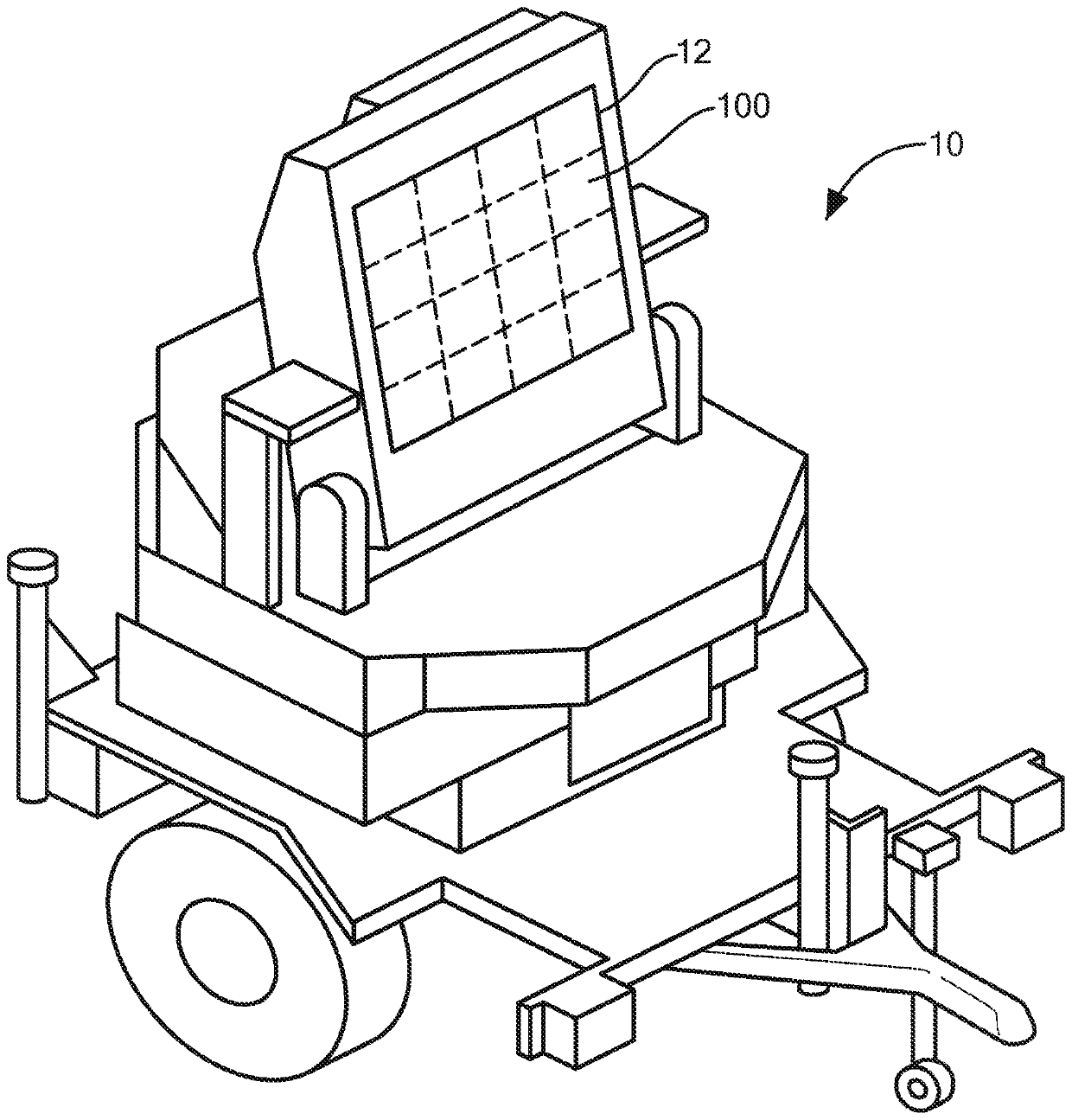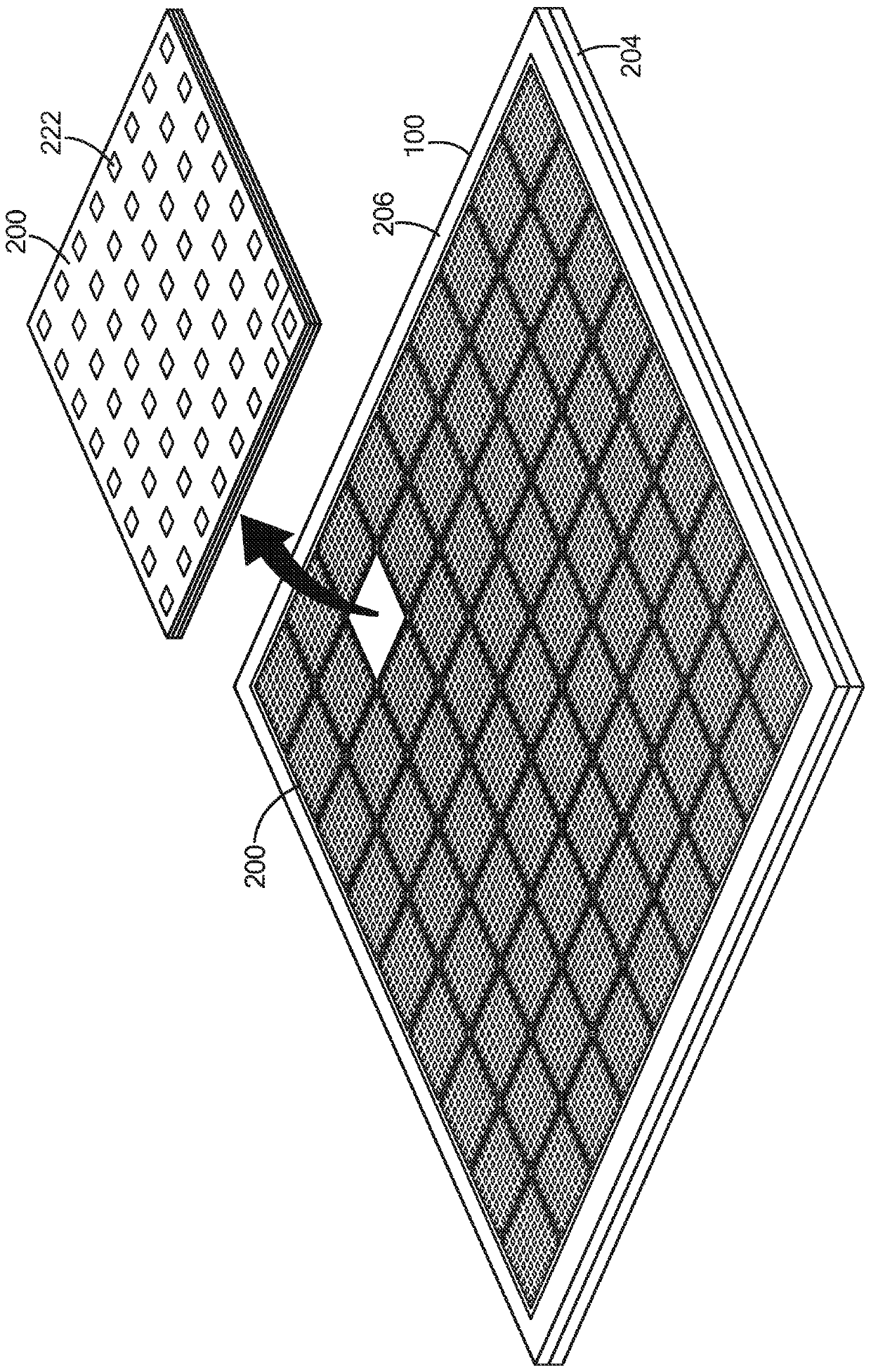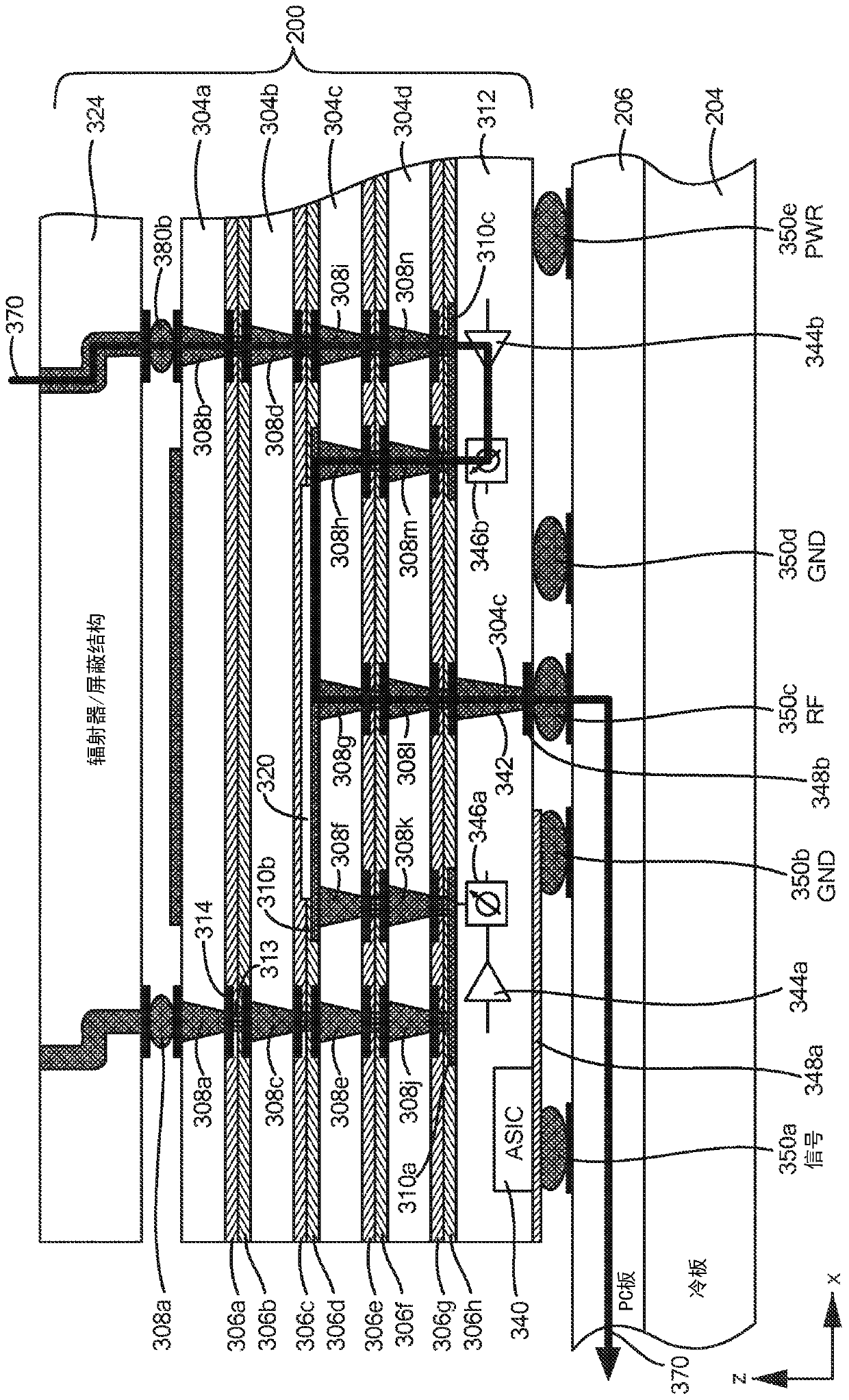Tile for an active electronically scanned array (AESA)
A technology of electronic scanning and tiling, applied in antenna arrays, modular arrays, specific array feeding systems, etc., can solve problems such as inoperability of active circuits
- Summary
- Abstract
- Description
- Claims
- Application Information
AI Technical Summary
Problems solved by technology
Method used
Image
Examples
Embodiment Construction
[0011] Described herein are millimeter-wave radio frequency (RF) tiles that function as active electronically scanned arrays (AESAs) and are scalable to form, for example, larger NxN AESAs. As described herein, the tiles incorporate low-loss glass RF manifolds that are wafer-level bonded directly to beamforming circuits and radiation shielding radiators.
[0012] As understood in the art, higher frequencies require tighter lattice spacing between active elements, which leaves less room for active circuitry. This becomes even tighter when λ / 2 (half wavelength at the emission frequency) spacing is required for wide scan angles. The tile structure described herein enables signals to pass through the Z-axis, for example using vias, allowing higher frequencies such as Ka-band and beyond. One or more tiles can be mounted to a printed circuit board, which enables scalability. For example, tiles provide high-density RF packaging and interconnects. In one example, the tiles include ...
PUM
 Login to View More
Login to View More Abstract
Description
Claims
Application Information
 Login to View More
Login to View More - R&D
- Intellectual Property
- Life Sciences
- Materials
- Tech Scout
- Unparalleled Data Quality
- Higher Quality Content
- 60% Fewer Hallucinations
Browse by: Latest US Patents, China's latest patents, Technical Efficacy Thesaurus, Application Domain, Technology Topic, Popular Technical Reports.
© 2025 PatSnap. All rights reserved.Legal|Privacy policy|Modern Slavery Act Transparency Statement|Sitemap|About US| Contact US: help@patsnap.com



